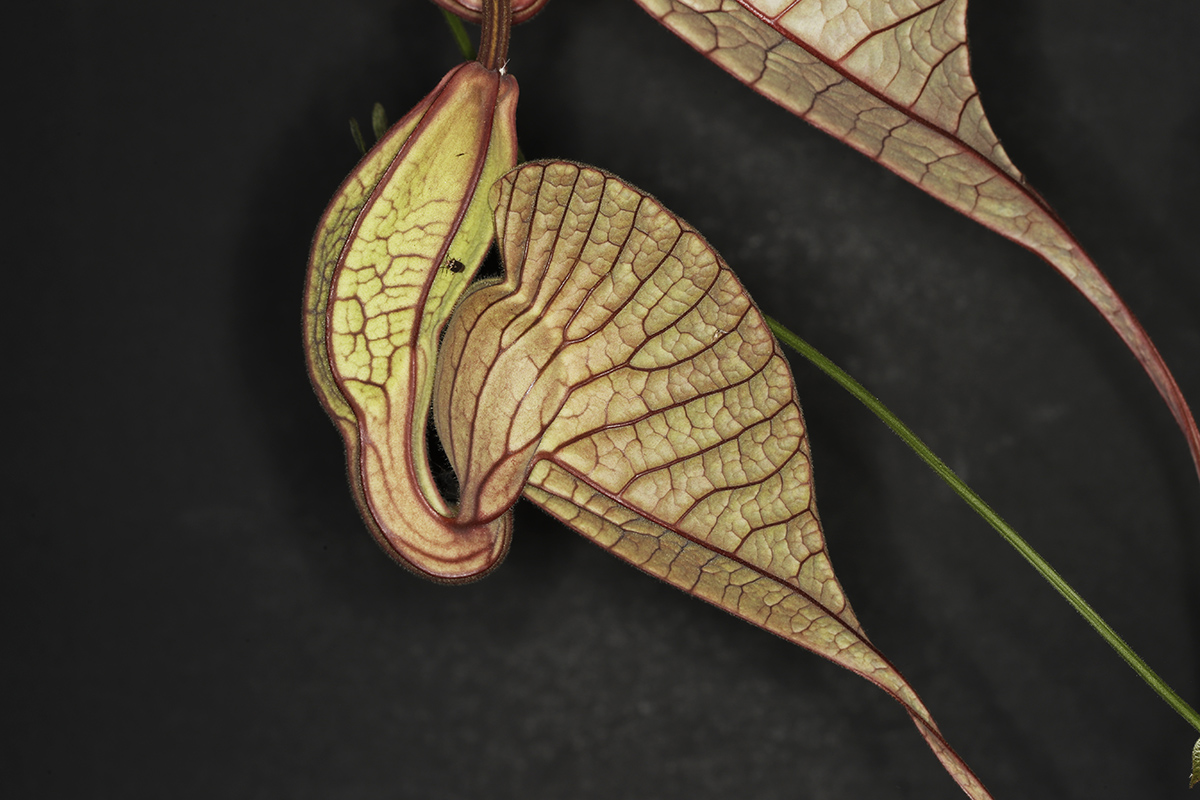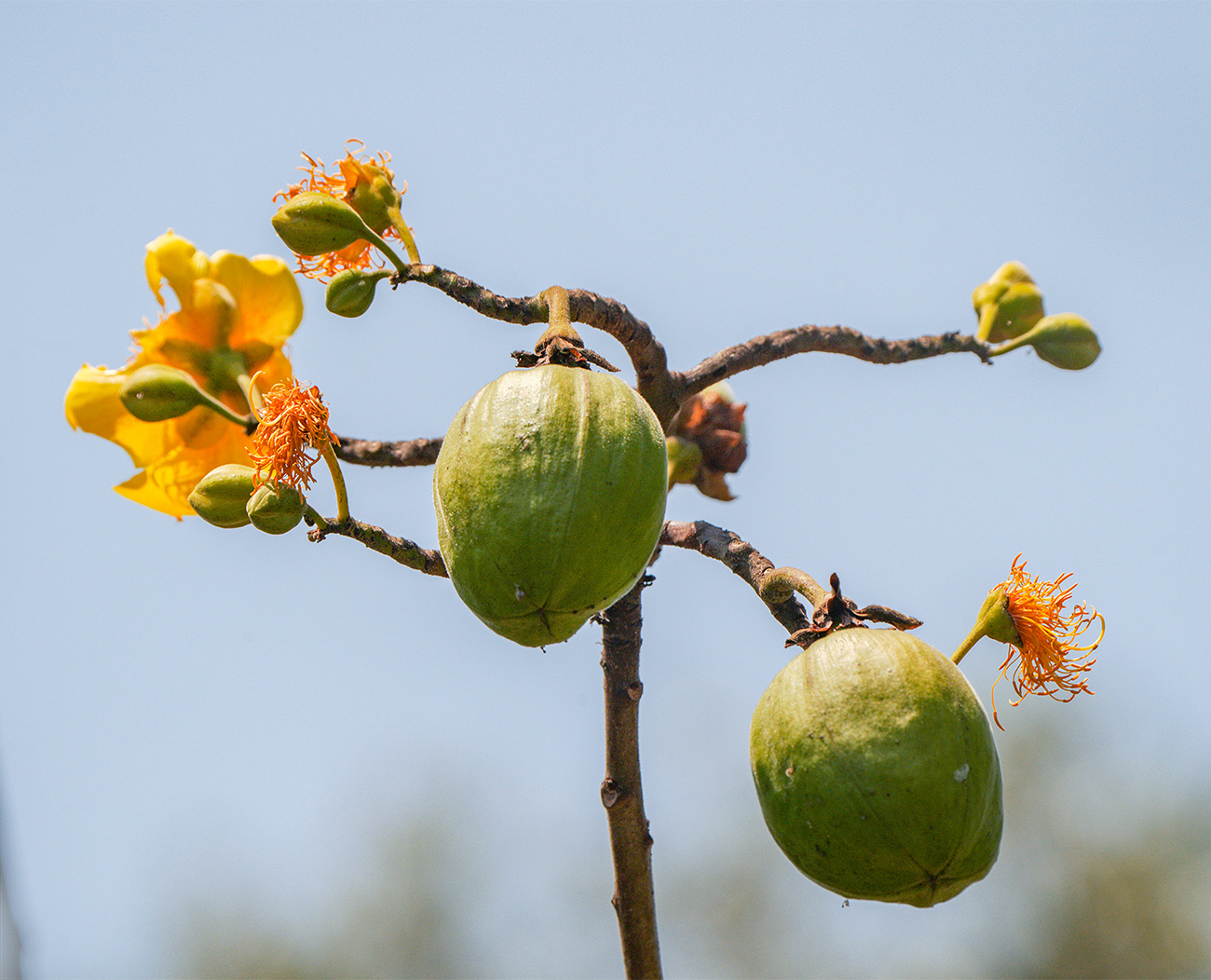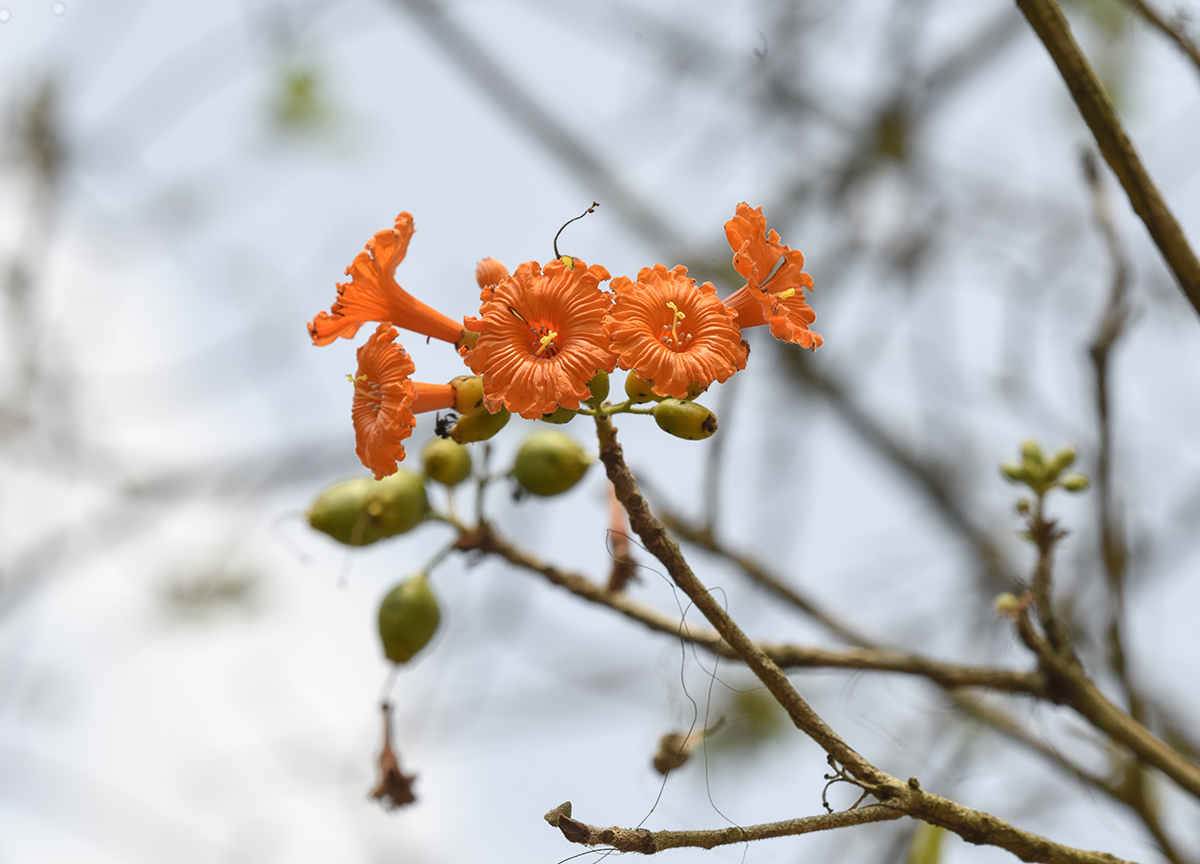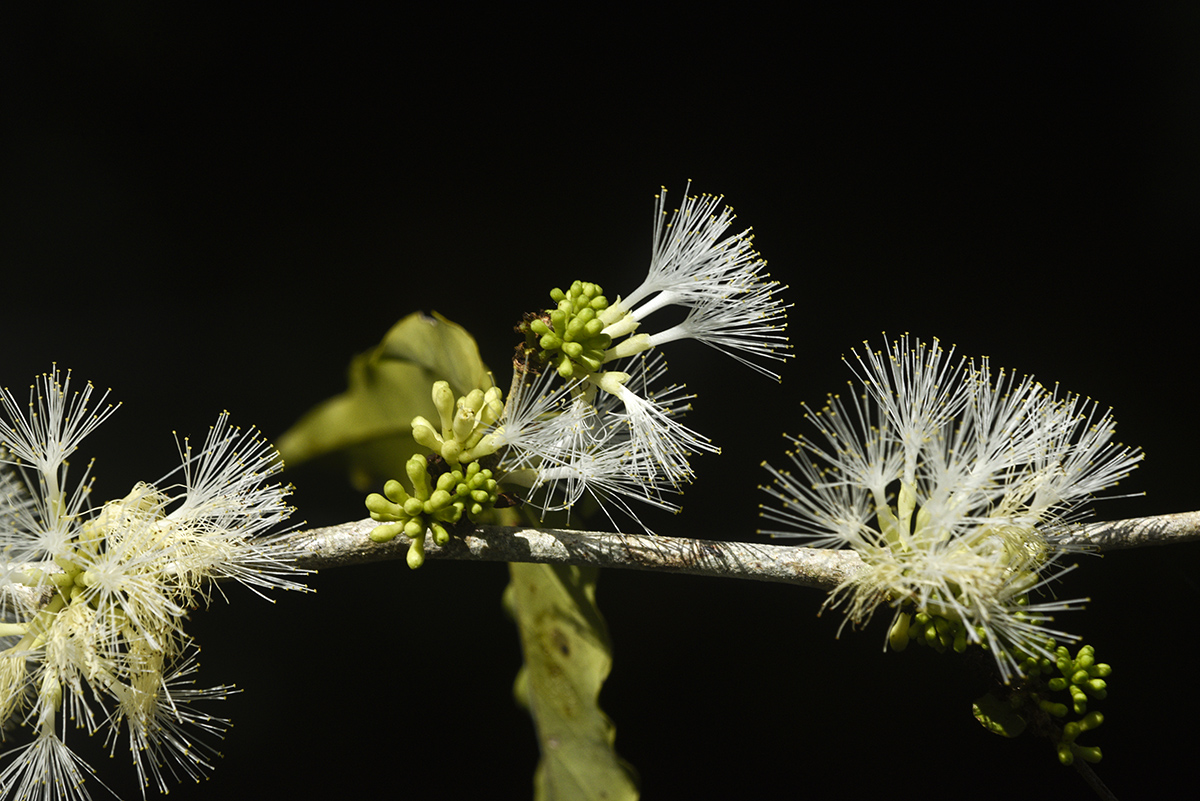World Traditional Medicine Day is commemorated on October 22, a day established by the World Health Organization (WHO) in 1991 through the Beijing Declaration, with the aim of rescuing, preserving, promoting, and widely disseminating the knowledge of medicine, treatments, and traditional practices. Through this agreement, Member States of the United Nations are asked to promote policies that guarantee the safe and effective use of traditional medicines.
Keep reading the note to find more information about traditional medicine in the World and in Mesoamerican countries.
Malvaviscus arboreus Cav. Sombrero Garde, Yaxhá, Petén. Erick Flores, 2018. Note: A decoction of the flowers is used in the treatment of bronchitis, fevers, inflammation of the digestive tract, as a gargle to treat sore throats, and in popular practice as an emmenagogue. A decoction of the leaves is used for the treatment of cystitis, diarrhea, gastritis, and sore throat
What is traditional medicine?
According to the definition of the United Nations, traditional medicine is the sum of total knowledge, skills, and practices based on theories, beliefs, and native experiences to different cultures, explainable or not, and used in the maintenance of health, as well as in the prevention, diagnosis or treatment of physical or mental illness. It comprises various health practices, approaches, knowledge, and beliefs from plants, animals, and mineral sources; spiritual therapies, techniques, manuals and exercises applied singly or in combination to maintain well-being, in addition to treating, diagnosing, and preventing diseases.
Traditional medicine encompasses a wide diversity of therapies and practices that vary between countries and regions. In some countries it is called “alternative” or “complementary” medicine. It has been used for thousands of years and its practitioners have contributed greatly to human health, particularly as primary health care providers at the community level. It is recognized as a fundamental source for the health of millions of human beings, an essential component of the tangible and intangible heritage of the world’s cultures, a wealth of information, resources, and practices for development and well-being, and a factor of identity of numerous peoples on the planet.
Aristolochia grandiflora Sw. Restaurante El Montañes, San Jerónimo, Baja Verapaz. Erick Flores, 2017. Note: The roots are abortifacient, sudorific and emmenagogue. They are used in the treatment of snake bites. The leaves are also sudorific and it is used in the treatment of cold and chills.
Traditional Medicine in the World
Traditional Medicine is a broad term used to refer to traditional Chinese, Hindu, Western Arabic, Olmec, Maya, Aztec, and/or various forms of indigenous medicine. This includes therapeutic practices, and experiences immersed in specific cultural contexts, which involve the use of herbal medicines, animal parts, mushrooms, and/or minerals. Likewise, they include non-medication therapies, such as acupuncture, manual practices, and spiritual therapies.
Traditional medicine has maintained its popularity throughout the world. Since the 1990s, there has been a resurgence of its use in many developed and developing countries. It is widely used and is a rapidly growing and economically important healthcare system. According to WHO estimates, 88% of all countries make therapeutic use of practices such as indigenous medicine, herbal medicine, acupuncture and others. In Africa, up to 80% of the population uses traditional medicine to help meet their health needs. In China, it accounts for around 40% of healthcare. In the Americas, 17 nations and territories have their own laws, policies and programs to recognize, protect, and include traditional and ancestry-based knowledge in their health system. Specifically, in Latin America, populations continue to use traditional medicine as a result of historical circumstances and cultural beliefs.
Cochlospermum vitifolium (Willd.) Spreng. Km. 25, CA9 Villa Nueva, Guatemala. 2014. Note: The roots and flowers are used to treat infections, headaches, stomachaches, and snake bites.
Traditional Medicine in Mesoamerica
Mesoamerican medicine had its own root and evolution, as it is based on specific concepts about the structure of the world and the origin of life. The ancient inhabitants of this territory imagined that the world was a huge cube. In the middle of that imaginary cube was a rectangular platform inhabited by man, where they located earth itself with its mountains, plants, animals, rivers and lagoons surrounded by the sea. That sea water arose on that distant horizon to form four immense blue was that reached the sky, conceived as the lid of the bucket. The sky roof was supported by 4 enormous trees, one in each corner. There was an underground world, the region below the habitable earth platform, which had nine cold levels where clouds formed, water was born, and aquatic beings lived. Above the platform they imagined thirteen celestial levels where light and heat were born and it was through this medium that the stars, the sun, and the moon and other beings of Mesoamerican mythology traveled.
In the pre-Hispanic world, the people conceived the disease as a product of action of beings that inhabit celestial floors and the underworld, and that through the elements of the platform: wind, water, sun, earth, animals, and others; they resulted in an imbalance in the human body. In this worldview, medicine was concerned with helping the patient regain balance. Medicinal plants were a resource with which the inhabitants of Mesoamerica helped themselves to seek a cure for their disease. These plants were used in different ways: ointments, to relieve disorder through the skin; potions, for external and internal use, vaporization, etc. The inhabitants maintained an almost perfect order and organization, with doctors specializing in different tasks. There were even schools to teach young people the art of healing and there were medicinal plant markets where the people could visit, buy and consult doctors.
Currently, many of these practices continue to be used within communities in Mesoamerican countries. The indigenous traditional medicine is practiced by therapists commonly known in Spanish as “curanderos” (traditional healers), “hierberos” (herbalists), and a considerable number of other specialists including “viboreros” or “culebreros” (snake healers), “rezanderos” (prayers), “sobadores” (massage therapist), “ensalmadores” (sorcerers), as well as “sabios” (wise ones) or shamans. These specialists offer different services aimed at preventing illness, restoring health, and maintaining individual collective and community health. They are often experts in health matters, but they are also religious or civil authorities, or individuals who are knowledgeable about the weather and give advice on planting practices. They base their practices and knowledge on the cosmovision of the traditional indigenous system and the population views them with profound respect and as intrinsically linked to the community.
Cestrum nocturnum L. Nicholas Hellmuth, 2018. Note: An extract of the plant is used as an antispasmodic and as a treatment for epilepsy. In recent studies the methanol extract of the plant has shown bactericidal activity against Staphylococcus aureus and various other bacteria. In laboratory tests, the extracts of the plant are shown to inhibit tumor growth and prolong the lifetime in a dose-dependent manner.
Methods, Procedures and Material Therapeutic Resources used in Mesoamerica
There are different methods for diagnosing illness in traditional medicine. They can include one or several of the following procedures: close observation of the patients and their environment, dialogue, divination, dreams and dream interpretation, pulses, “limpias” (cleansings), ingestion of psychotropic plants, premonitions or warnings, inquiry into behaviors, and assessment of emotional, climatic, social, and interpersonal factors among others. Sometimes the same procedure is used for both diagnosis and healing.
The therapeutic resources vary depending on the diagnosis and the specialty of a given traditional healer. Some resources include the use of medicinal, psychotropic plants, and plants used in rituals, medicinal animals and amulets, minerals, hydrotherapy (“temazcal” a pre-hispanic sweat lodge or tub bath), sacred places, “mandas” (penance or sacrifice offered to alleviate the problem), “rezos” (prayers), promises, pilgrimages, offerings to holy or sacred entities, and power staffs.
Cordia dodecandra A. DC. Paso Caballos, Río San Pedro, Petén. Nicholas Hellmuth, 2016. Note: The bark, flowers and fruit are used to make cough syrup. The fruit is eaten raw with a sweet pulp and is considered a delicacy by local people. It is also highly esteemed for making preserves.
Traditional Medicine in a Modern World
In the seventies, an important change occurred in the use and study of herbalism in most of the world. Such a shift came from the World Health Organization, which recognized that medical plants used by indigenous cultures played an important role in the health of many countries. In the present year, a report by WHO showed that 40% of pharmaceutical products have a natural product basis encompassing traditional, complementary and integrative medicine. In a world where many people still associate traditional medicine and complementary spiritually with witchcraft, integrating indigenous forms of healing into mainstream healthcare may be challenging but necessary.
The truth is that modern medicine is in dire need of new drugs. Getting a new substance past the research and development stages and onto the market takes years and the investment is enormous. Additionally, growing drug resistance, partly caused by drug misuse, has rendered several antibiotics and other life-saving drugs ineffective. Both trends make scientists and pharmaceutical laboratories urgently search for new sources of drugs and pay more and more attention to traditional medicine. A few achievements have fueled interest in traditional medicine as a source of highly successful and profitable drugs. As revealed at the WHO summit, many landmark drugs like aspirin, artemisinin, and childhood cancer treatments also derive ingredients from traditional medicine.
Pithecellobium dulce Mart. Tamarindito, Petexbatún, Sayaxché, Petén. Nicholas Hellmuth, 2019. Note: The pulp has been used as astringent and haemostatic, to treat gum ailments, toothaches, and bleeding in any wound. The cortex is used to treat chronic diarrhea, dysentery, constipation, and tuberculosis. The extract of the leaves is used for indigestion, prevent miscarriage, and bladder pain. The ground seed is used to treat ulcers, diabetes mellitus, biliary disorders, fever, cold, sore throat, malaria, skin pigmentation, acne, dark spots, conjunctivitis, irritable bowel syndrome, eczema and leprosy.
FLAAR Mesoamerica’s work on medicinal plants
As an organization we are motivated to work every day to research and generate open access reports and complete bibliographies on plants with different uses. In 2014 we generated a complete inventory of plants with edible, medicinal, drug, cosmetic, and other uses. Click on the following link to read more about these plants: https://www.maya-ethnobotany.org/FLAAR-Reports-Mayan-ethnobotany-Iconography-epigraphy-publications-books-articles-PowerPoint-presentations-course/26_Mayan-ethnobotany-Guatemala-Honduras-El-Salvador-Mexico-Belize-utilitarian-and-sacred-plants-flowers-annual-report-J-2014.pdf. The photographs in this note have been recorded by the team during field trips since they are species with important uses in the country's communities and all have medicinal properties. Click on the following link to learn more about the flora species we have been studying and reporting recently: https://flaar-mesoamerica.org/product-category/ethnobotany/.
Bibliography
- 2001
- Mesoamerican Healers. University of Texas Press, Austin.
- 2012
- Medicinal Plants: Biodiversity and Drugs. CRC Press, Taylor & Francis Group. A Science Publishers Book.
- 2022
- Traditional Medicines Around the World. iUniverse.
Posted October 22, 2023
Written by Flor Morales Arroyo.



















































































